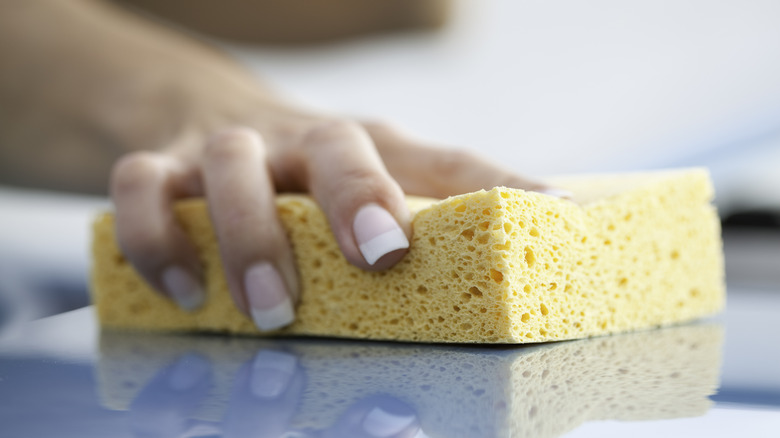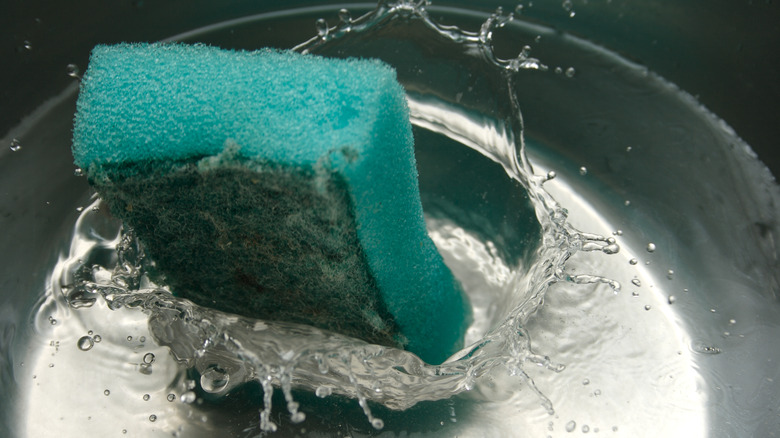The Cleaning Product That'll Make Your Kitchen Sponges Like New Again
Our kitchen sponges do a lot of heavy lifting in our homes. They clean up all kinds of spills, drips, and splotches left behind from food particles, dirt, and grime. That's how they end up being rife with bacteria. That's why experts recommend cleaning your sponge every few days and replacing it altogether every few weeks. When it comes time to clean your sponge, you'll want to reach for this cleaning agent. Cleaning kitchen sponges is just one of the many surprising ways to use hydrogen peroxide in your home.
Hydrogen peroxide contains germ-fighting capabilities that kill the bountiful varieties of bacteria found in your kitchen sponge. According to a 2017 study, microbiologists found more than 362 different species of bacteria on a kitchen sponge. In addition, they discovered about 45 billion pieces of bacteria per square centimeter of sponge. Among these nasty germs are E. coli, salmonella, and Staphylococcus aureus, as told by ASM Microbe Online. And hydrogen peroxide can neutralize them all. The oxidizing properties of hydrogen peroxide allow it to destroy fungi, bacteria, and viruses.
How to clean your sponge with hydrogen peroxide
When using hydrogen peroxide as a cleaning agent in your home for things like your kitchen sponge, you'll want to use 3% hydrogen peroxide, which means it's diluted with 97% water and 3% hydrogen peroxide. This is what's referred to as medical-grade hydrogen peroxide. Anything higher in concentration than this can be dangerous and toxic if you breathe it in or get in on your skin.
When cleaning with hydrogen peroxide, make sure that the room you're using it in has adequate airflow so you don't directly inhale the substance. You might also want to wear gloves to protect your hands. To disinfect your kitchen sponge using hydrogen peroxide, you'll want to pour equal parts of hydrogen peroxide and water into a bowl. Place your sponge inside the bowl and let it soak for 15 to 20 minutes. Rinse your sponge clean with water to remove all of the hydrogen peroxide and let dry.

